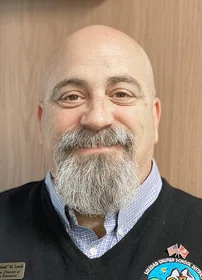Contract negotiations: Trials, triumphs, and trust
Guest Column by Francis M. Lynch
February 10, 2025

As a human resources professional and lead negotiator, I can tell you that nothing is quite as exhilarating as signing a Closing Tentative Agreement (TA) or a Memorandum of Understanding (MOU) to close out a negotiation session. And, the more time you spent working on the TA or MOU, the more I relish the sense of a job well done. Getting to the final product is often a long road, sometimes several years.
All negotiations start at someplace far outside the negotiations meeting room when you first meet the union president, their executive board, and their lead negotiators. As soon as you become a part of the district negotiating team, your focus needs to adjust so that you can see the fine details of developing the Collective Bargaining Agreement. Then you have to look to the process: What process does the district use in negotiations? Are we a collaborative team with our labor partners? Is there tension and mistrust? Are negotiations contentious and transactional? Have you recently been at impasse? Fact finding? Strike?
There are many questions that need to be answered long before the teams meet at the negotiating table. What does negotiating look like in this district? Are the bargaining units competitive with each other? Is there a “me too clause”? If so, is it actually in the contract or just a district practice? Do all of the negotiating teams meet at one table, together?
No matter what the process looks like in your district, there is plenty of work to do before you begin the work of actual negotiations. Meet with your current negotiation team, your superintendent and/or cabinet, possibly even the board of trustees to gain an understanding of the current status and procedures for negotiations.
After that, it may be a good idea to have an informal meeting with your union partners to establish norms for the negotiating table, review processes and procedures, determine any wanted or needed changes, and to introduce you and your negotiating team. Most importantly, make sure that you give time and respect to your negotiations historians — these are the people who may have been at the table for the last several years and are the keepers of your history.
The most important thing to bring to the negotiations table is trust. If you don’t have it, you need to find it.
Now that you have some idea on process and norms, you can begin to work on the most important aspect of negotiations — trust. The most important thing to bring to the negotiations table is trust. If you don’t have it, you need to find it. If you don’t have trust, it really makes sense to put a pause on negotiating and really focus on trust-building. In the long run this will actually save you time. Remember that sometimes you have to give trust to get trust. If trust is not already present at the table with you, then you may have to make a concession or two to demonstrate how fiercely you want to develop trust. Be careful that you don’t start giving in to any request — that won’t establish trust but it will lead your Union partners to believe that you are willing to give them everything.
Spend time getting to know the “why” for each of the people at the table, you may be surprised by just how many people share a common motivation. Break bread together with your team and with the Union negotiation teams. Play some icebreaking games, start you negotiation sessions with a recap of your goals (both union and district goals), select a negotiations team that does not create hostility or ill-will and encourage your labor partners to do the same.
A final thought: Remember that both sides of the negotiating table want the same thing — the best contract you can develop, that the district can afford to pay for, and that best serves your students.
Francis (Frank) M. Lynch is the interim superintendent of Tehachapi USD. He previously served as executive director of Human Resources for the Soledad USD.




